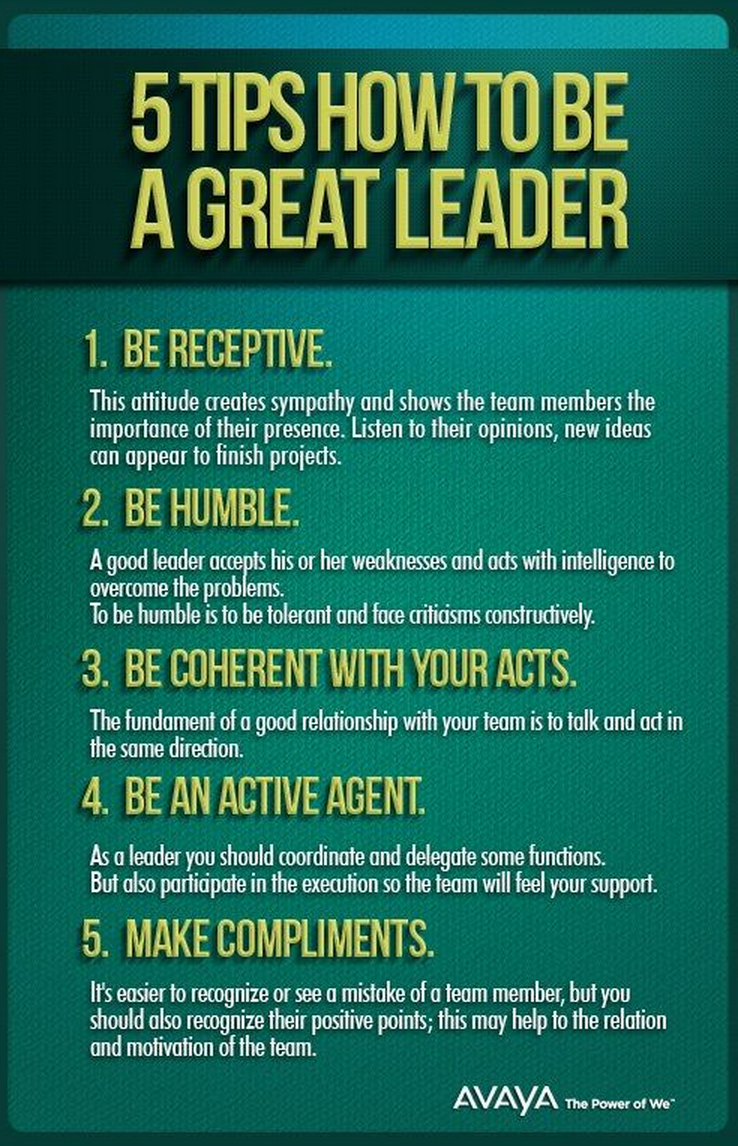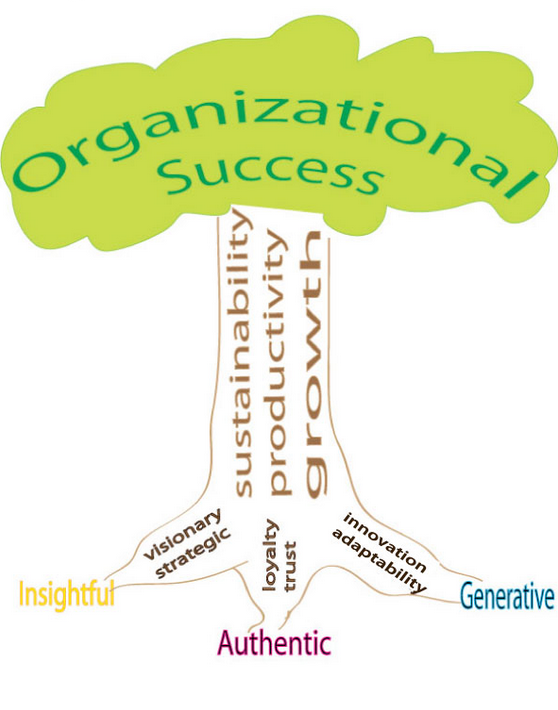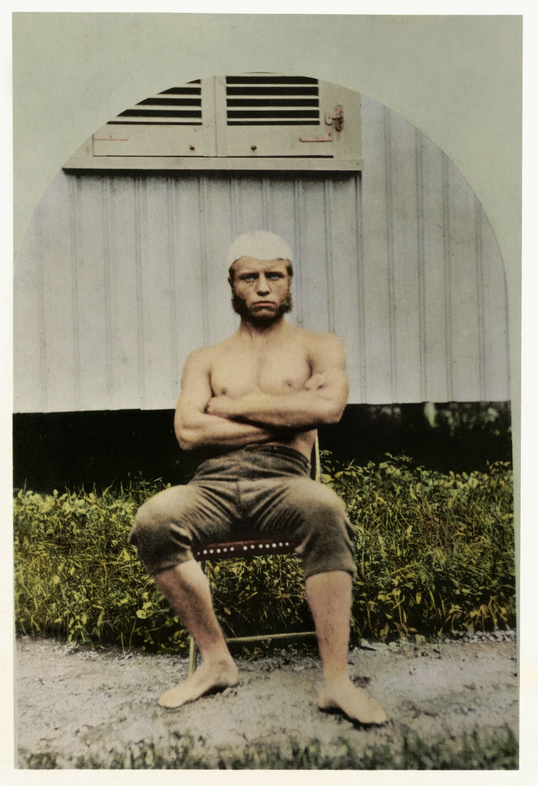Chloe Slovinsky is The Leadership Appeal’s nominee for “best blog” based on her consistent clever, crafty and coherent posts on leadership.
Month: September 2015
Reaching your Prime
One day not that long ago I decided I was going to go from being good at being healthy to being great. Although I maintained a fairly healthy diet and had a consistent exercise regime, I knew that I wasn’t reaching my full heath potential at 22 years. The decision to look at my unhealthy habits head on and make active changes to put them behind me took honesty and determination. I had to carefully assess my behavior in a wide variety of contexts including behaviors triggered from stressful, social and habitual environments. Once I defined my strategy to combat the behavior keeping me from reaching my fullest health potential, I consistently enforced new behavior until I met my goal.
Jim Collins explores the idea of Level Five Leadership as a change in behavior that results from a need to produce sustained results. Level five leaders are resolved to do what ever it takes to make the company great, no matter how big or small the decision is. In order to make these decisions, leaders need to be able to fully identify who makes up the company, where it is now, and where it needs to be in order to transition from good to great. In other words, the leader needs to be informed of the followers, the task at hand, and how they can use there leadership skills to produce sustained results.
Without asking the hard questions in why and when I act on unhealthy habits, I would not be able to identify the real change I needed to reach my goal. Level five leaders understand that all issues are a result of the leader, follower and task at hand. To create strong improvements, they need to create customized solutions to produce real results that will take a company from good to great.
Leadership Pairing
Pairing a colorful plate of unique flavor with a complimenting wine takes skill, creativity, and risk. No two wines are exactly the same, varying in aromas, textures, and complexity. Although sommeliers are highly educated in wine pairing, each plate is too unique for sommeliers to consistently use the same wine to enhance the meals flavor.
Just like a gourmet five-course meal, individual behavior varies as a result of cultural, environmental, and personal factors. Just as a sommelier will assess a meal’s unique characteristics when pairing the perfect wine, a leader needs to assess the situational characteristics and the individual employee when applying a leadership strategy.
In previous posts I have explored a variety of theories which consistently are flawed in situational characteristics. Leadership is entirely dependent on followers in varying situations. According to Seyranian’s publication on Contingency Theory of Leadership, the simple goal of a leader is to help elucidate the path of followers to achieve. The contingency theory is unique to others because it finally puts the leadership situation into account and acknowledges that the paths of followers are never identical.
Throughout the many jobs I have been trained for, I can see that some training programs instilled the skills I needed to perform effectively and efficiently, while others hindered my overall job performance. As the new marketing coordinator for a luxury travel company, I was expected to bring my young creativity and computer design skills to the table. The office was excited to have a Millennial who they believed would understand complex computer software effortlessly. Although familiar with many systems, I still needed to be trained properly to ensure I met the high standard of work the company expected. My manager delegated daily tasks which included brief instructions of what she needed to be done. Although I could ask questions when needed, which showed a supportive environment, her support didn’t prove to be sufficient because I didn’t have a enough basic knowledge to perform the complex tasks at hand.
Instead of the low directive and high supportive style of my manager, I would have greatly benefited from a high directive and high supportive behavior environment. I needed to clearly understand the step by step process in addition to motivational behavior supporting my learning process. In my experience, I didn’t feel that I was seen as an asset worth investing in, which resulted in an overall negative experience. Because I am an individual with a unique learning process, I didn’t need to be simply supported through the internship’s tasks, I needed to be coached.
I Do Therefore I Serve
I have always taken pride in that I am a “do-er”. Once I establish a goal and create a vision, I always put in the hard work until this vision becomes a reality. From becoming a Class IV white water river rafting guide to learning Spanish in South America, I have created a gratifying life though planning and delivering. As described in Yukl’s Leadership Behavior Overview, leaders must be do-er’s. Although instead of acting on behalf of your own goals, you act to achieve your team’s goals for sustained results. In Yukl’s overview of leadership behavior, these behaviors are organized though action planning, clarifying, explaining, monitoring, supporting, developing, and acknowledging. By following this organization of leadership behavior, you are a do-er in that you are managing change, motivating a each individual, and creating alignment towards a common goal.
So what does this mean for my leadership philosophy? From what I have learned though Jim Collin’s Good to Great and Yukl Leadership Behavior Overview, actions of servitude create results and results are what create value growth. Similarly to many religious and happiness ideologies….the more you give the more your receive. I value my life and the lives of those around me. As a do-er, I will act on behalf of the my team and the institution I am serving because great leadership only exists with servitude.
I am a Leader Therefore I Serve
“I have vision that I act on, I have great people skills, and I am ambitious”, were words I often used to identify myself as a great leader. Maybe my leadership experience was only grand from the eyes of an unexperienced young adult, but at least it was a good start. Now that I am an educated adult, my leadership philosophy must also mature for me to continue to identify myself as a strong leader. With the exposure to the seemingly endless leadership theories from college courses to books and articles on leadership, I am beginning to see which theories I believe to be the best.
What I find most compelling is that leadership has nothing to do with the leader and everything about the followers. My previous belief that “I am ambitious therefore I inspire” is a fallacy in addition to “I have vision therefore I direct”, and “I have great interpersonal skills therefore I connect”. Just because I have traits of that imply leadership does not make me a leader. Leadership is a conscious choice that I believe are best defined in servant leadership theory, level 5 leadership, and people and task behavioral leadership. These theories all share one major commonality-actions of servitude, and behaving in a way that supports your team through development, motivation and guidance to results. Most importantly, the only moment a leader puts his or her self first is when the leader takes fault for their mistakes.
Jim Collin’s defined a level 5 leadership as “a combination of humility and modesty with a ferocious resolve to produce results”. Level 5 leaders are hard to come by because leaders are often overlooked without a “superstar” persona. When level 5 leaders are given the opportunity, they make each member of their team a superstar of their own trade…then to forget about getting credit for this victory. As humans whom seek the balance of gratification to work given, I can see why becoming a level 5 leader to be the most challenging.
Although a challenge, it is clear to me why Jim Collin’s theory of level 5 leadership is so successful. Stewardship takes a great deal of energy and conscious choice to always be building those around you. There is no room for a quick moment of selfishness and rashness. It takes control of your own self and a faith you will prevail. Both level 5 leadership and the theory of servant leadership focus on leaders who behave with a authentic tenacity to support their team. Becoming a level 5 leader does not happen over night and although I do not have a leadership role in the work place at this time, I will apply the theory in my life as a student by making the conscious choice to confront the brutal facts, improve my personal humility and feed my personal will to create sustained great results.
Lost in Leadership
ABC’s Lost is known as one of the most expensive, dynamic and confusing shows in the 21st century. The production’s seemingly unlimited cast of unique characters had something to offer to any type of audience. Although it took me several years after the series ended to give Lost a fair chance, I steadily watched all six seasons and became hooked as the suspenseful storyline unfolded.
Although the main leaders in the show changed dramatically, each had a specific leadership style that carried throughout the six season. Some showed participative decision making and others authoritative. A few leaders were clearly task oriented while others focused on people as a leadership orientation. Finally, these leaders also differed in their perspective of the intentions of the group. Some assumed that members disliked participating and others believed the team enjoyed responsibility.
Jack Shephard was the first individual of Oceanic flight 815 to rise as a leader. After the crash, people blinded by fear, pain over loved ones lost and shock. Jack organized survivors to search for the wounded, stay calm and to remain focused of creating shelter. Though these actions, Jack rose as a participative leader, including others in his plans and building team moral.
As the story unfolded, Jack continued to play as both task and people oriented. He fostered relationships with all survivors and listened to their concerns. When anyone was in harm, he would put any task on hold to get them to safety. He also made tough decisions and concentrated on the task at hand. Throughout the series the main task was to get off the island which other individuals argued to be the cause of a magnitude of recurring issues. Although Jack had strong leadership behavior, he often made uneducated decisions caused by his sense of urgency. During the third season, Jack didn’t allow another character to participate in a dangerous task due to the high risk stating, “For 90 days I have been asked to make decisions-there you go I just made one”. If Jack had listened to Sayid Jarrah’s reasoning, he would have understand that the task was necessary and potentially saved lives. This example also shows how Jack more often had a Theory X perspective on the group by delegating tasks in order to meet a common goal without the expectation that the team truly wanted to responsibility.
In comparison to Jack’s leadership style, Benjamin Linus had a very different style. As the leader of “The Others” Ben practiced authoritarian leadership by demanding individuals to blindly follow his commands without question. In the third season, Jack organizes an unexpected attack on the others with the help of Juliet. After Juliet’s testimony Jack claimed, “ Ben Sent Juliet to test for pregnancies in the group”, which expresses her duty to complete Ben’s demands regardless of the ethical appeal. This example also shows that Ben was task oriented and didn’t care about the people that could be effected along the way. Ben also showed that he obtained Theory X leadership when he threatened those who refused to follow his lead. He believe that force was needed to motivate group members to work and they naturally in’t want to contribute to his goal.
Five Traits to Leadership
The Leadership Tree
Pros and Cons of Trait Theory
The entertainment industry is brutal. After long hours of Hollywood traffic and in crowded audition rooms, casting directors will take one look at you and make their decision based on whether or not you simply have “it”. So what is “it”. Is it alignment of proportionate features? Or is it a certain energy or aura of confidence? Truth is, there is no combination of traits that can provide an explanation.
For centuries, cities were ruled by “born leaders” or those with royal blood. Others who rose and conquered were viewed as “the great man” or someone who possessed the strength, courage, and knowledge from birth. Both theories, “The Great Man” and “Trait Theory” suggest that leaders are born, and people never change. Some are strong and coordinated from year one and others are timid and shy. The Great Man Theory proves to be false because people have developed new traits and accomplished extraordinary things throughout history. Former president of the United States and leading force of the Progressive Era, Theodore Roosevelt, was born a unhealthy child with debilitating asthma (a young Teddy Roosevelt photo above). With dedication, he embraced a strenuous lifestyle and successfully regained his health to become a strong leader in time. Although a few traits such as humility and honesty are more difficult to learn…dedication, confidence, passion, and intelligence can be practiced till perfection.
So what is “it” according to the trait theory? Is there a secret recipe- A combination of just enough patience, assertiveness, and authenticity to flawless leadership? The answer is no. There is no perfect combination of traits because the only true indicator of great leadership is the lasting impression left on those following. A great leader can be many things, but the “it” or the thing that truly matters, is how the leaders make people feel.
Traits and Me
I have always enjoyed the energy of networking events. As I stroll from booth to booth exchanging small talk with individuals in the hospitality industry, I project my personality and passion travel/tourism and meeting and events with the hope of catching a professionals interest. After many exchanged cards and hand shakes from the evening, I naturally think back to whom I met. Those who projected enthusiasm, authenticity, and honesty always stand out in the crowd. Is it because these traits make me feel energized, secure, and driven to succeed? Or are these qualities of a leader I’d be honored to follow?
Leaders have the ability to inspire and transform individuals by making them feel confident, supported and guided towards the best version of themselves. As we all know, some leaders do this much better than others. Trait Theory claims that leaders with specific traits are best fit for leading with success. Typically those transformative leaders have unique traits such as creativity, drive honesty, intelligence in combination with a positive energy that people like me, find quite inspiring.
Aside from first impressions, great leaders have additional traits that keep their followers motivated with a growth mindset. I find that leaders who are patient, organized, humble, and reliable ensile trust and dedication from their team. It takes tremendous time and energy invested in a teach to train individuals to be independent and productive. Without the traits listed above, a leader will not be capable of sustaining employee buy-in and build loyalty.
As we have all experienced at networking events, first impressions can be powerful. But without a well rounded set of traits, successful leaders cannot exist.











